I love to Boondock! While I do stay in RV parks and campgrounds at times, my favorite place to park is out in the boonies. There’s nothing like watching deer graze in the woods next to your parking spot or listening to the soothing sound of flowing water. If you like peace and quiet, natural surroundings and sunsets from the top of a mountain, you just might be a boondocker, too! And the best part? Boondocking is almost always free!
If you think this sounds like a great way to RV, but have never tried it, this series of articles is for you. In these articles, I’ll be covering different aspects of boondocking, with topics such as generators, solar, personal safety, finding boondocking spots, and choosing campsites. But let’s start by defining boondocking.
So.. What Is Boondocking, Anyway?
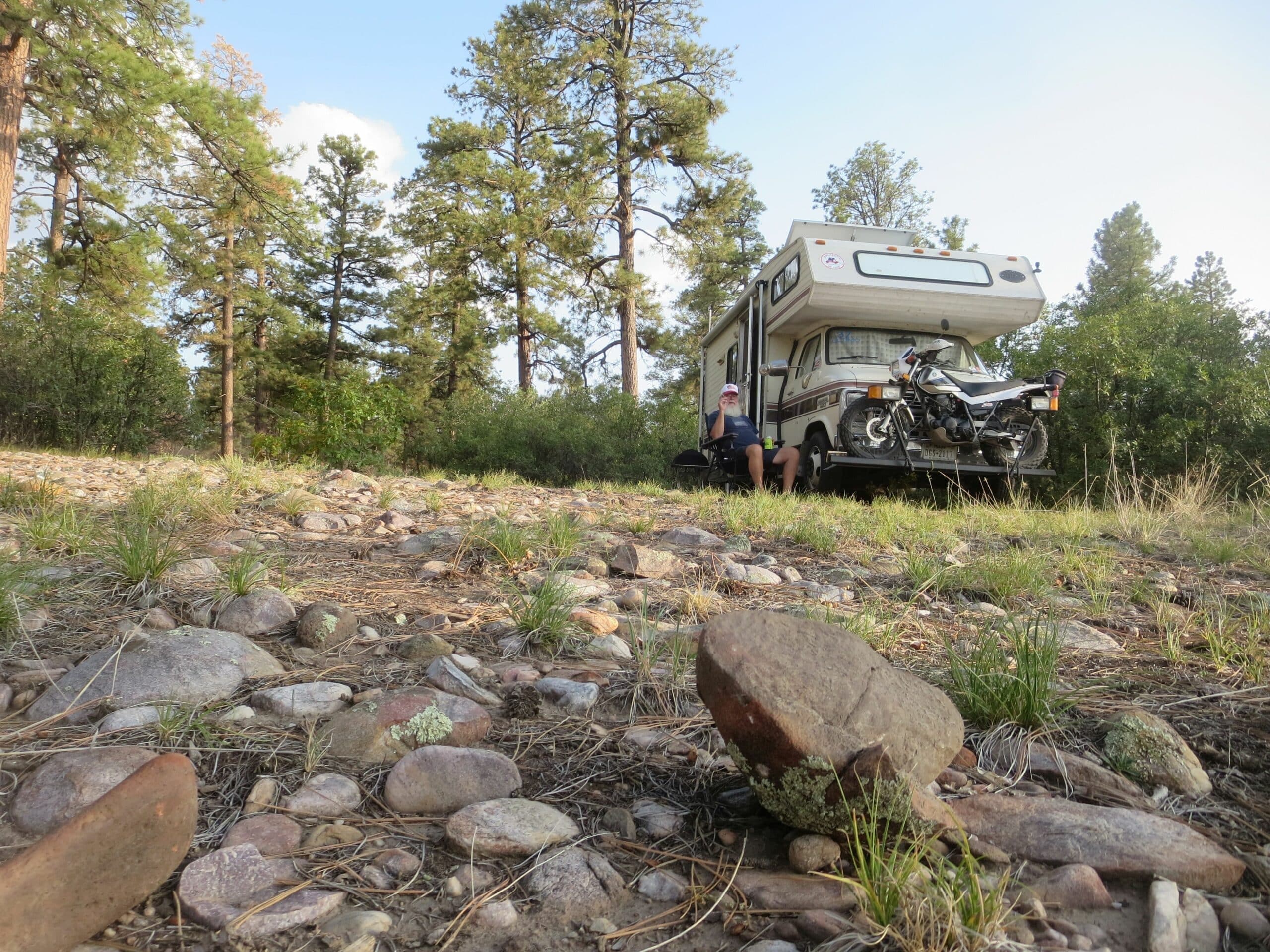
Boondocking can simply be described as camping without hookups. Dry camping is a kind of boondocking, but I think of it as parking on a parking lot or in a campground without hookups. I prefer to think of boondocking as camping “away from it all.” The best part about boondocking is experiencing the outdoors, where you are away from the distractions of cities and towns, and out of the close quarters of RV parks.
I spend a lot of time on public lands. Many folks don’t know that the American public owns all federal public lands, including Bureau of Land Management (BLM) lands, National Parks, National Forests, Wilderness areas, wild and scenic rivers and wildlife preserves. All Americans have the right to experience and enjoy these places, and every American has a personal stake in the care of these places. There are millions of acres of BLM lands open and available for your use, and most National Parks and National Forest lands offer “dispersed” camping outside of their developed campgrounds. Let me give you a personal example: I spent the summer of 2018 enjoying great boondocking spots in the Carson National Forest in northern New Mexico.
The Carson is 1.5 million acres of land, and I could set up camp anywhere within 300 feet of any park road. Anywhere! I could stay up to 14 days in any one spot, but I tended to move around a lot, because I couldn’t wait to see what the next spot would be like. Most places I stayed were between 8,000’–10,000′ elevation, and the days were pleasantly warm and the nights cool and crisp. There were many small towns where I could shop for essentials, a meal or a beer, and I even had cell coverage in most of the places I stayed.
Give Boondocking a Try
It’s easier than you think: your RV is equipped to operate without electric and water hookups, and you have holding tanks for your water wastes. Some RVs are better boondockers than others. Having a residential fridge or an all-electric RV can make it a little more difficult, but you can definitely still boondock. You might need to run a generator from time to time, and we’ll talk about ways to reduce generator usage in a later segment, but for now, let’s talk about easy ways to give boondocking a try.
If you’re concerned about your RV’s ability to exist without hookups, let’s take it on a test run. Simply go and rent a full hookup site for a few days in an RV park or campground. If you have any solar panels, be sure to pick a site where you will have full sun for as much of the day as possible. Make sure the park you choose allows you to run a generator. Now, let’s cut the cords: Fill your freshwater tank and dump your holding tanks. Make sure you have a good supply of propane onboard, disconnect your hoses and cords, and put your RV into boondock mode. If you have an RV fridge, switch to gas mode. If you have a residential fridge, your RV may have the option of running it off an inverter. Start thinking about conserving power and water. Spend a few days in the park and see how your RV does without water and power. If you get in trouble, you can easily plug in and hook up. I find that water is usually the limiting factor on how long I can stay in a particular spot. In your RV, battery power and recharging options may be what limits you. Fear not, we’ll cover lots of ways to improve your RV’s boondocking ability.
Easy Modifications For Boondocking
Let’s start with an easy mod that will help you get the most out of your 12V power system: LEDs! If your RV has incandescent bulbs in the light fixtures, changing them to LEDs will reduce your use of battery power substantially. A single 1156 incandescent bulb will draw about 1.5 amps of DC power. Turn a few of them on together and you’ll be drawing a lot of current from your batteries. An 1156 LED replacement bulb will draw about 1/10 the current and provide a similar
amount of light.
LED bulbs used to be expensive: costing upwards of $20 per bulb. They were a costly solution, but many folks adopted them to conserve power. Recent improvements in design and technology, and universal adoption of LEDs as the light of choice in cars and homes, has led to major reductions in cost. I recently purchased a dozen 1156 LED replacement bulbs for about $17. That’s a good deal!
Choosing the Right Replacement Bulb to Save Power
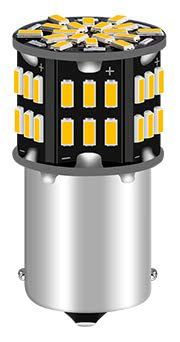
LED replacements are available for most common bulb types. When choosing them for your RV, you will first need to identify the bulb type and part number that your fixtures use. If you have any difficulty identifying the bulbs in your rig, try this site https://m4products.com identify-bulbs-bases/
Next, we need to talk about colors and lumens. LEDs produce light in different color temperatures. We see these colors as a range of yellow, white and blue. LEDs with higher color temps tend to be bluish. Lower temps tend to be white and yellow. Most folks prefer either a warm white (around 2,500–3,000 K) or a daylight white (3,000–4,500 K). Higher temps are decidedly blue. The original incandescent bulb in your lamp was probably around 2700K.
Lumens are a measurement of brightness. Using the common 1156 bulb as a reference, we will find that it is rated at around 400 lumens. I like to choose LEDs in the 300-400 lumen range for general lighting, and 500-600 lumens for places where I want a brighter light. I like my reading lamps and porch lights bright.
Be aware that many cheap generic LED bulbs are described as producing way more lumens than they actually do. Your best bet is to buy one and see how it performs before you invest in a dozen or more. Online consumer ratings are often helpful. I’ve also found that the less-expensive LEDs may have problems with longevity and can have some strange failure modes. Over the years, I had a number of older bulbs develop problems, and that’s what prompted me to purchase some replacements.
The 12-pack of bulbs I recently purchased for $17 were Alopee brand, soft 1156 warm white 3000k LED, 12VDC replacement blubs for RV interior use. They are supposedly 600 lumens, but I’d estimate they are pretty close in light output to the original 1156 bulb, around 400-500 lumens. They work well in my fixtures and provide a light that is very similar in color to a typical 12V incandescent bulb. Now the question is: how long will they last? Only time will tell.
My RV is 100-percent LED. When boondocking, I feel comfortable using as many lights as I wish, knowing that the power drain is negligible. You can choose to upgrade only the lights you use the most and leave things like closet lights and rarely-used fixtures incandescent.
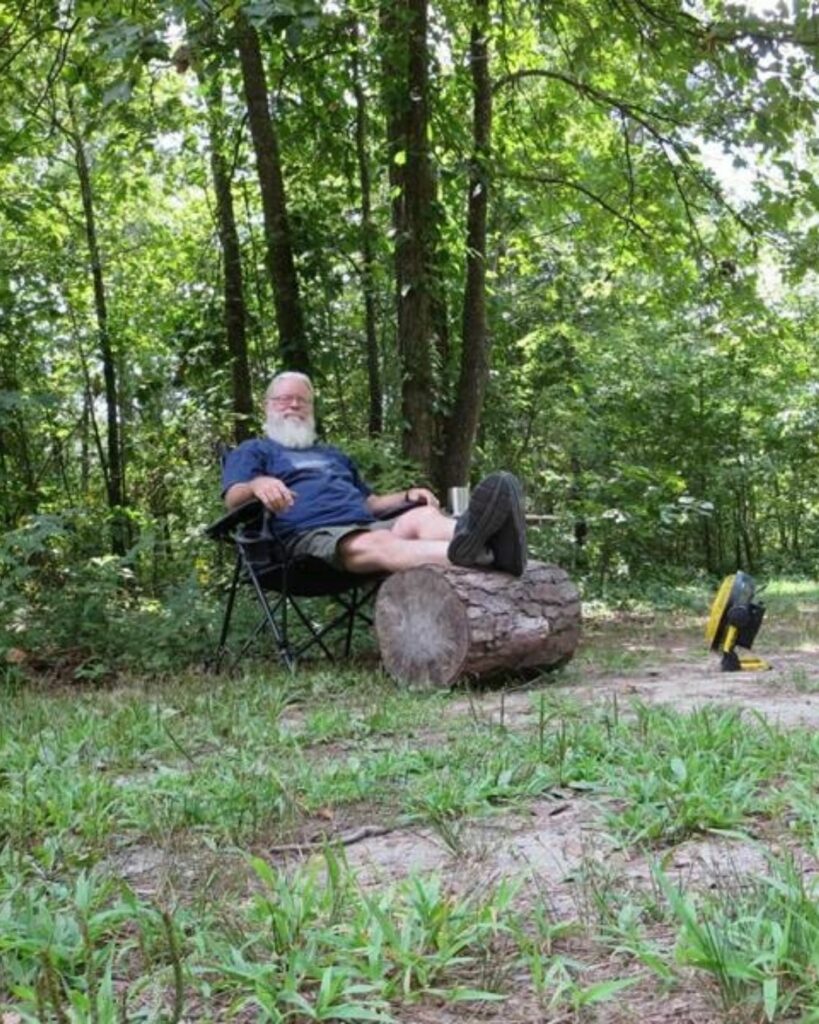
Author
Mark Nemeth
MARK travels in a small class-C and has made numerous modifications to his RV to enable him to boondock more easily. He’s not saying he’s an expert, or the primary source for boondocking information, but he’s done it for a number of years and is happy to share some things that he’s learned the hard way.

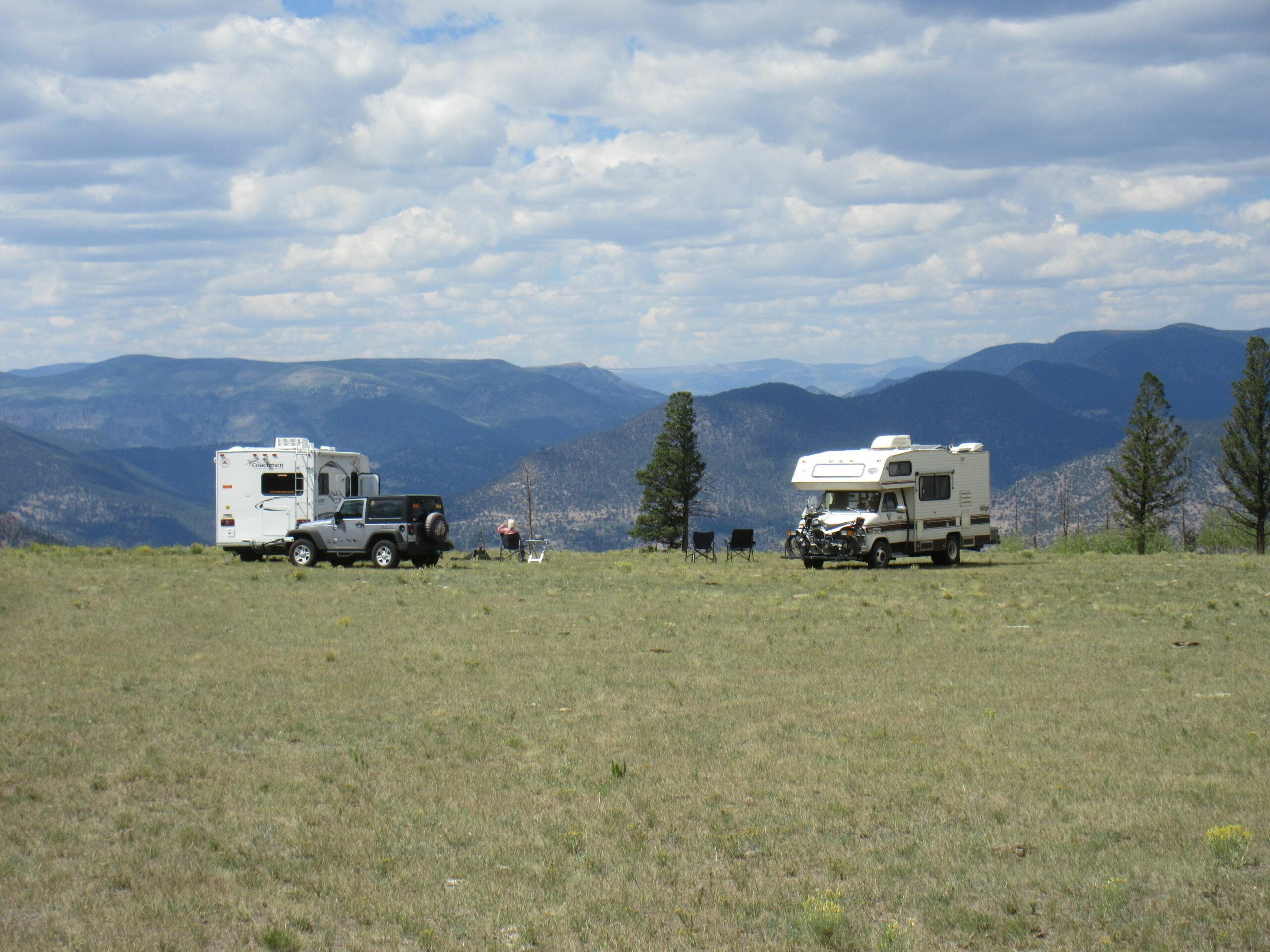


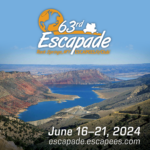

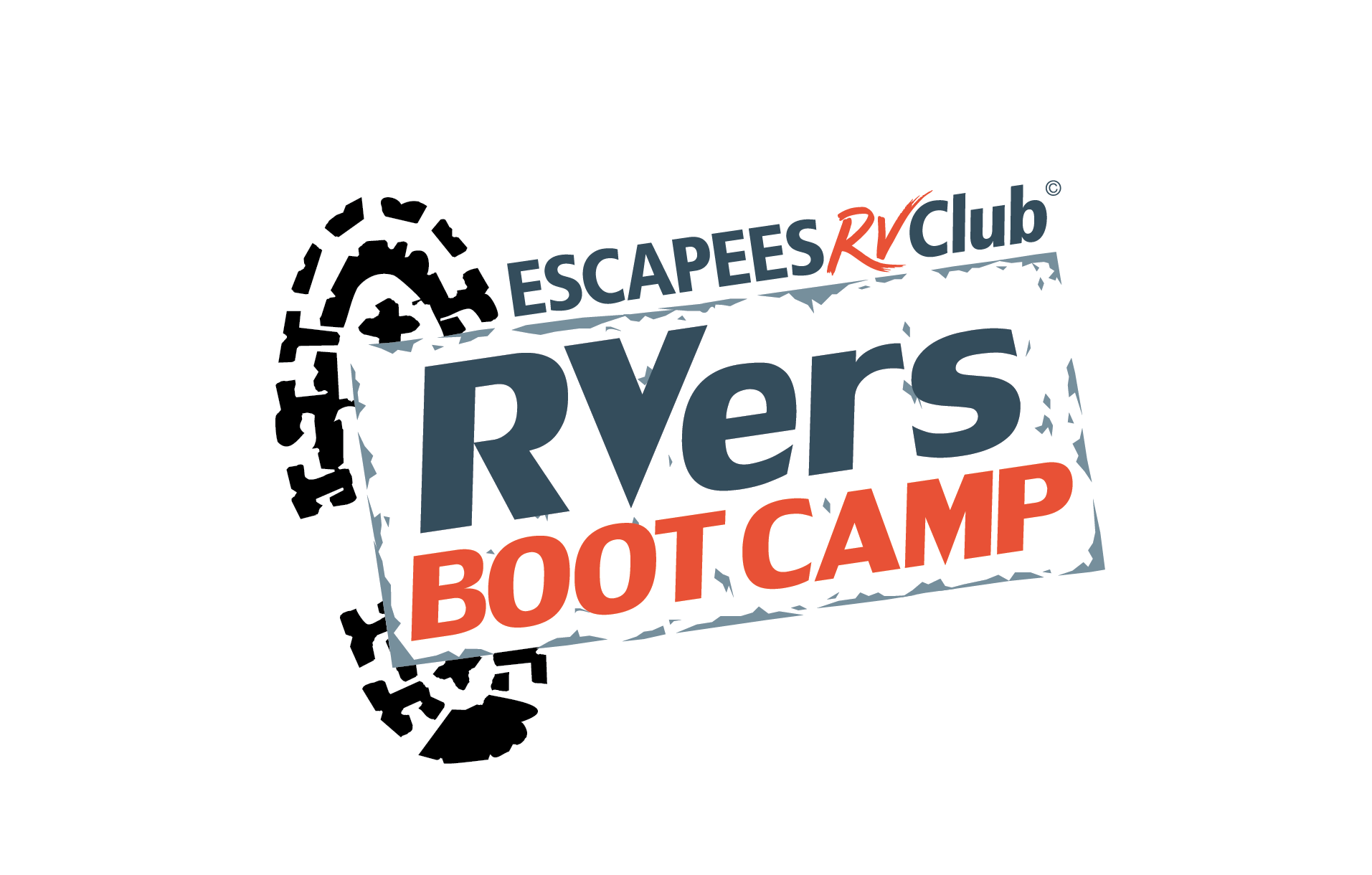


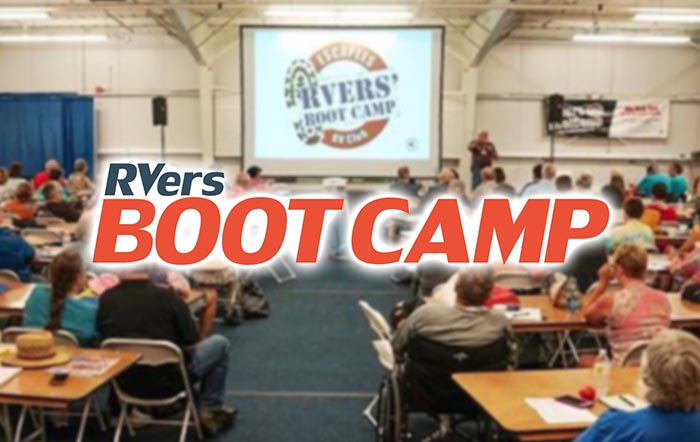
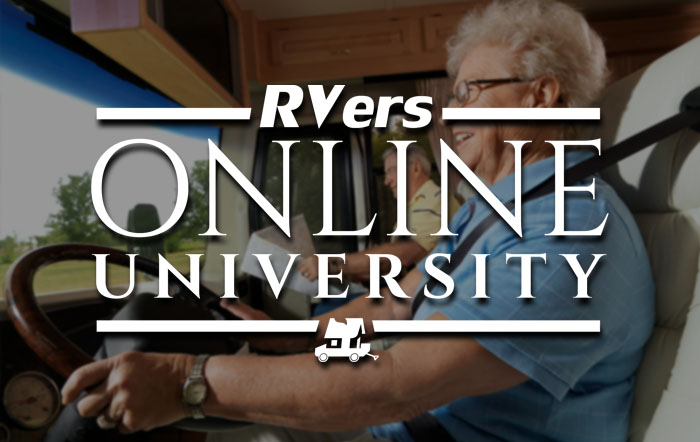

One Response
Thank you for the info Mark. My wife and I are in the initial stages of acquiring a small.class C RV for primarily Boondocking. We will continue to research all applicable information as we are newbies to this. For us, our love for the outdoors and desire to live a somewhat minimalist lifestyle has us on the next part of our now 27 year journey together.